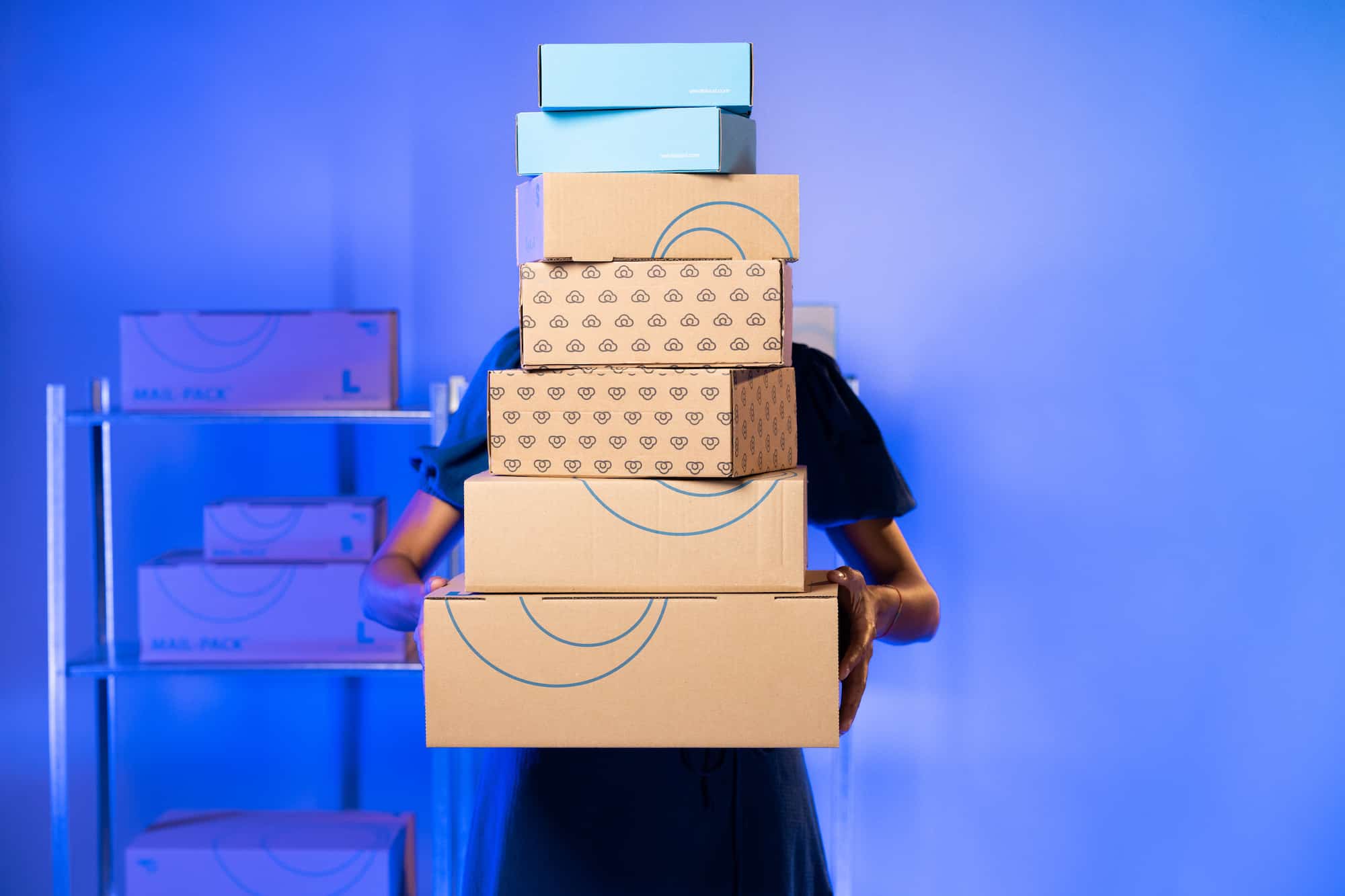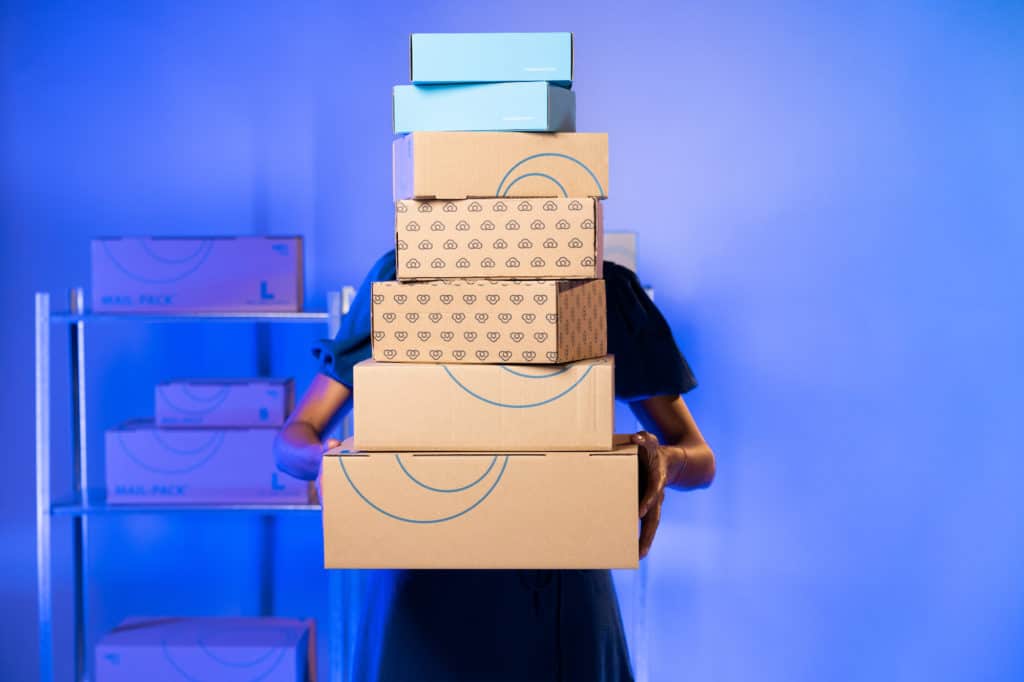Delivery delays are one of the biggest frustrations for both online retailers and their customers. Whether it’s a missing house number, a carrier backlog, or a snowstorm shutting down routes, even small issues can cause big setbacks.
Luckily, you don’t have to let delays ruin your business. In fact, there are a couple of things you can do to minimize the impact of delivery delays on your operations, reputation, and customer satisfaction.
In this article, we’ll explore what delivery delays really mean, the most common causes behind them, and practical steps you can take to fix or even prevent them.
What is a delivery delay?
A delivery delay happens when a shipment takes longer than the estimated transit time due to an unexpected disruption in the shipping process. On your tracking page, this usually appears as a “delayed” or “in transit longer than expected” status.
While occasional delays are inevitable, frequent or poorly managed ones can quickly harm your brand’s reputation and customer loyalty. According to the Sendcloud E-commerce Delivery Compass 2025, 31.5% of online shoppers experienced a delivery delay.
What is causing shipping delays?
Even with the most efficient operations, delivery delays can occur for reasons that are often outside your direct control. However, most of these causes can be anticipated and mitigated when you understand where the weak points lie in the shipping journey.
These are the main causes of delivery delays e-commerce businesses face today, along with what’s typically behind them.
Delays due to address and order data issues
It might sound simple, but one of the leading causes of delivery delays is incorrect or incomplete shipping information.
Misspelled street names, missing apartment numbers, or invalid ZIP codes prevent carriers from locating the destination and often lead to return-to-sender shipments.
Errors can also occur inside your own system when SKUs are mismatched or customer details are entered incorrectly. Each error slows down fulfilment and increases the likelihood of delays.
Cut-off times and warehouse handling bottlenecks
If your team misses a carrier’s daily pick-up window, that order won’t leave until the next working day… and that’s an instant 24-hour delay.
Inefficient warehouse processes, manual label creation, or last-minute order edits also create friction between order confirmation and dispatch.
Delivery delays due to weather and external disruptions
From snowstorms and floods to transport strikes or local infrastructure failures, external events can halt deliveries entirely. Even mild weather conditions like heavy rain can slow transit times as drivers prioritise safety.
As frustrating as it may be for customers when weather conditions result in delays, there is only so much carriers can do to ensure timely delivery.
Carrier capacity constraints and peak season surges
During peak periods like Black Friday or the holiday rush, carriers may exceed their normal capacity. The result: parcels queue up in depots, adding days to delivery times.
In these situations, on-time communication is key, but a multi-carrier strategy might also be worth considering.
International shipping and customs clearance
Cross-border shipments often face longer and more unpredictable transit times. Customs delays are one of the top reasons for late international deliveries, especially when documentation is incomplete or incorrect.
First-attempt delivery failures (recipient not at home)
Sometimes, a delivery delay happens not because of the sender or carrier, but because the recipient isn’t available when the courier arrives.
If no one is home, the parcel is rescheduled for another attempt, extending delivery time by a day or more.
How to reduce shipping delays (practical fixes)
We’ve already looked at the most common causes of delivery delays and given you a hint on how to fix them.
Now, let’s dive deeper into the practical steps you can take to actually reduce those delays.
1. Improve data quality (validation, pick/pack checks)
The foundation of on-time delivery is accurate order data. Address errors, SKU mismatches, or incomplete customer details often cause delays before the parcel even leaves your warehouse.
What to do:
- Use automated address validation at checkout.
- Double-check orders during the pick-and-pack stage.
- Integrate your store, WMS, and shipping software so data flows automatically.
That way, you can eliminate most preventable shipping delays before they happen.
2. Use a multi-carrier strategy for contingency
Relying on one carrier means you’re vulnerable when that network hits capacity or experiences disruption. A multi-carrier strategy gives you flexibility and control, allowing you to reroute shipments instantly when issues arise.
What to do:
- Partner with multiple carriers that complement each other’s strengths (e.g. domestic vs. international).
- Use tools like Sendcloud to switch carriers with one click when service disruptions occur.
- Test new carriers in advance of peak season to ensure smooth transitions.
3. Offer convenience with out-of-home delivery options
First-attempt delivery failures are one of the most common and frustrating causes of delivery delays. When the recipient isn’t home, the parcel is rescheduled for another attempt, which automatically adds one or more days to the delivery time.
What to do:
- Offer customers the option to choose out-of-home delivery methods, such as parcel lockers or pick-up points, directly in your checkout.
- Highlight these options as faster and more flexible alternatives during the buying process.
Out-of-home delivery guarantees successful first-attempt delivery, reduces carrier workload, and is often cheaper and more sustainable than home delivery. It’s a simple yet powerful way to prevent avoidable shipping delays while improving customer experience.
4. Set accurate ETAs and monitor on-time performance
Customers expect honesty. Overpromising delivery speed is one of the fastest ways to create frustration.
In fact, according to Sendcloud Peak Season Index 2025, 67.5% of online shoppers won’t come back to your online store if you miss your delivery promise.
What to do:
- Base delivery estimates on historical carrier data rather than best-case scenarios.
- Track on-time percentages by carrier, region, and product type to identify patterns.
- Review performance data regularly via tools like Sendcloud Shipping Intelligence to detect and address recurring delays early.
When you know your real performance, you can promise delivery times you’re confident you can meet and improve reliability over time.
5. Proactively communicate delays and new ETAs
Even with the best systems in place, delivery delays still happen. What sets great e-commerce brands apart is how they communicate about them.
What to do:
- Notify customers as soon as a delay is detected, before they reach out first.
- Use tracking notifications to explain the cause (e.g. “Weather disruption” or “Carrier backlog”).
- Provide a revised ETA and a clear next step, such as rebooking delivery or requesting tracking updates.
- For added reassurance, consider including an apology email or a compensation offer when appropriate.
Explore these 10 strategies to optimize order tracking to turn a frustrating experience into an opportunity to build trust
When a delay happens: the playbook
When delays happen, the key is how you respond. A well-structured process not only helps you manage the situation efficiently but also demonstrates to customers that you’re proactive and reliable when things go wrong.
Here’s your step-by-step playbook for handling delivery delays effectively.
1. Notify your customer immediately
Don’t wait for customers to reach out first. As soon as a delay is confirmed, contact them through their preferred channel: email, SMS, or tracking notification.
Be clear about the situation and explain what’s being done to resolve it. Customers appreciate honesty, especially when it comes before disappointment.
2. Apologize and set a new ETA
A simple apology goes a long way. Take ownership of the issue and share an updated delivery estimate. If possible, specify the reason for the delay (e.g. weather, customs, carrier backlog).
Providing a revised ETA helps manage expectations and restores confidence in your service.
3. Follow up with the carrier
If the cause is unclear, reach out to the carrier for more details or to request prioritisation. Keeping track of open cases helps you resolve issues faster and avoid repeating the same mistakes later.
Document all communication so your support team can stay aligned.
4. Keep tracking updates active
Keep your customers informed throughout the process. Automated tracking pages and emails help reduce uncertainty and lower your customer support workload.
Tools like Sendcloud Tracking make it easy to send branded updates as soon as a parcel’s status changes.
5. Consider a goodwill gesture
Even when a delay is beyond your control, a small gesture can turn a frustrated customer into a loyal one. Offer free shipping, a small discount, or loyalty points on their next order.
6. Review and prevent recurrence
Once the issue is resolved, take a moment to understand what caused it. Was it a data error, a carrier bottleneck, or something external?
Feed that insight back into your process so the same issue doesn’t happen again. Over time, this builds a more resilient and predictable shipping operation.
Wrapping up: how to stay in control of delivery delays
Delivery delays are inevitable in e-commerce, but their impact doesn’t have to be. With the right processes, partners, and communication, you can stay in control and protect both your customer experience and your bottom line.
Here’s a quick recap of what to remember:
✅Get to the root cause.
✅Anticipate demand surges and secure carrier capacity for peak times.
✅Adopt a multi-carrier strategy.
✅Monitor performance and use data to your advantage.
✅Communicate proactively.
✅Offer convenience with service points and lockers.
You can’t prevent every delay, but you can control the experience. That’s what defines a great brand.


















